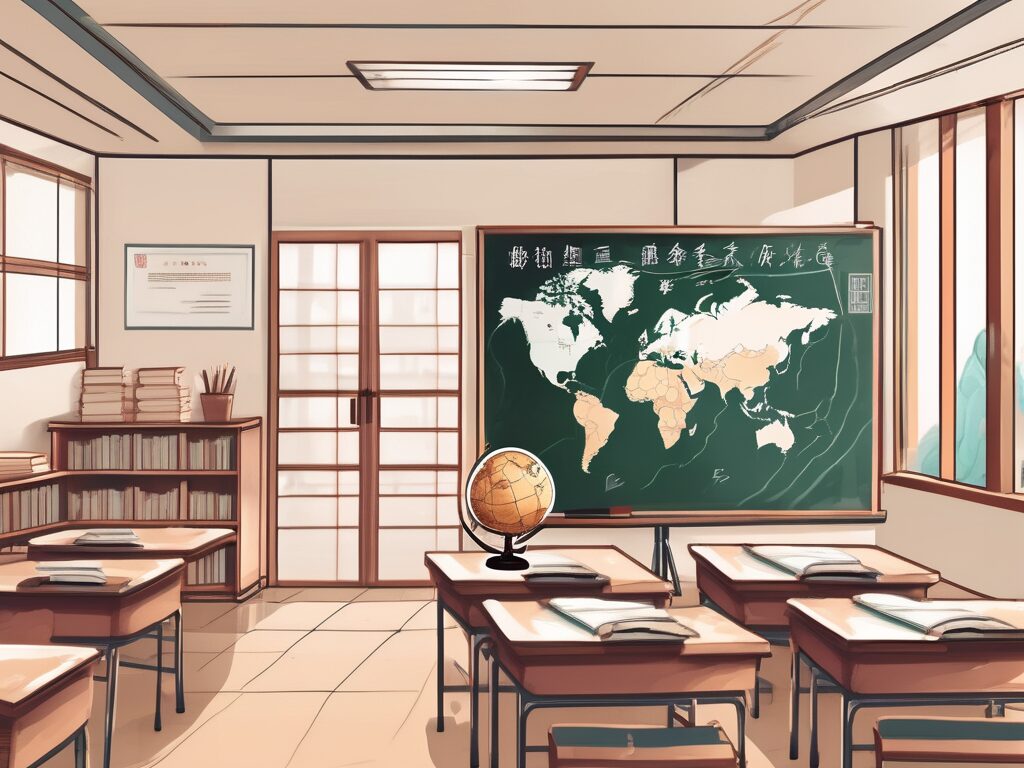Embarking on an International Postgraduate Certificate in Education (IPGCE) journey in China can be an exciting yet daunting prospect. The cultural differences, language barriers, and unique teaching methodologies can pose significant challenges. However, with the right strategies, you can turn these challenges into opportunities for professional growth and personal enrichment. In this blog post, we will explore four effective strategies to overcome the teaching challenges with an IPGCE in China.
Understanding the Cultural Differences
China, with its rich history and diverse culture, is a fascinating place to live and work. However, the cultural differences can sometimes lead to misunderstandings and miscommunications in the classroom. Understanding and respecting these differences is the first step towards successful teaching.
For instance, Chinese students are often more reserved and less likely to participate in class discussions compared to their western counterparts. This is not because they lack understanding or interest, but due to cultural norms that emphasise respect for teachers and discourage questioning authority. It’s akin to the British tradition of maintaining a stiff upper lip, where emotions and opinions are often kept under wraps.
As an IPGCE teacher, it’s essential to create an inclusive and encouraging learning environment that respects these cultural norms while also promoting active participation and critical thinking. This could involve using teaching methods that encourage participation in a non-confrontational way, such as group work or peer-to-peer discussions.
Overcoming Language Barriers
Language barriers can be one of the most significant challenges when teaching in China. While English is commonly taught in schools, the level of proficiency can vary widely. This can make it difficult to communicate complex concepts or engage students in in-depth discussions.
Think of it as trying to explain the rules of cricket to someone who’s only ever played football. Without a common language or understanding, it can be a real challenge. However, there are several strategies you can employ to overcome this hurdle.
Firstly, using visual aids and practical demonstrations can be incredibly helpful. Just as a picture is worth a thousand words, a well-placed diagram or hands-on activity can often convey a concept more effectively than words alone. Secondly, learning some basic Mandarin can go a long way in bridging the communication gap. Not only will it help you communicate more effectively, but it will also show your students that you respect and value their language and culture.
Adapting to Different Teaching Methodologies
Teaching methodologies in China can be quite different from those in the west. Chinese education traditionally emphasises rote learning and memorisation, whereas western education often focuses on critical thinking and problem-solving.
It’s a bit like comparing a traditional lecture-style class to a modern, interactive workshop. Both have their merits, but they require different skills and approaches from the teacher. As an IPGCE teacher, you’ll need to find a balance between these two methodologies to effectively teach your students.
One strategy is to gradually introduce more interactive and problem-solving activities into your lessons. This can help your students develop critical thinking skills while still respecting the traditional Chinese emphasis on memorisation. Additionally, providing clear and detailed instructions for these activities can help your students understand what is expected of them and reduce any potential confusion or anxiety.
Navigating Bureaucracy and Regulations
Like any country, China has its own set of rules and regulations for foreign teachers. These can range from visa requirements and work permits to specific teaching qualifications and certifications. Navigating this bureaucracy can be a challenge, especially if you’re new to the country.
It’s a bit like trying to decipher a complex legal document without any prior knowledge or experience. It can be confusing and overwhelming. However, with some patience and perseverance, it’s entirely manageable.
One strategy is to seek advice from other foreign teachers who have already gone through the process. They can provide valuable insights and tips based on their personal experiences. Additionally, many schools and institutions offer support and guidance for foreign teachers, so don’t hesitate to ask for help if you need it.
In conclusion, teaching with an IPGCE in China can be a rewarding and enriching experience. By understanding and respecting the cultural differences, overcoming language barriers, adapting to different teaching methodologies, and navigating bureaucracy and regulations, you can overcome the challenges and thrive as a teacher in China.
Take Your Teaching Career to New Heights with IPGCE
Ready to transform your teaching challenges into milestones of success? Join the UK’s #1 Teacher Training Course, the IPGCE, and embark on a journey that will not only enhance your qualifications but also accelerate your career progression. With our program, you’ll join the ranks of educators who have seen a 50% increase in interview callbacks and a 45% boost in promotion rates. Connect with a global network of professionals, gain a deeper understanding of international curricula, and enjoy the flexibility of balancing your professional development with your current commitments. Don’t let inadequate credentials or isolation limit your potential. Join the UK’s #1 Teacher Training Course today and become 65% more adaptable in the ever-evolving landscape of international education.

